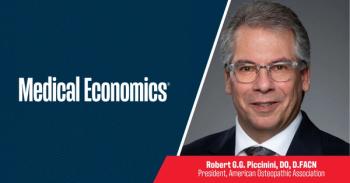
The decline of solo primary care
Key Takeaways
- Primary care visits for Medicare beneficiaries have shifted from physician-owned practices to hospital-affiliated clinics and multispecialty groups.
- Policy changes, including the Affordable Care Act, expanded funding for federally qualified health centers and rural health clinics, influencing care delivery settings.
Medicare data shows a shift toward larger, multispecialty and hospital-affiliated practices.
The traditional primary care office is no longer the default destination for
Over the past decade, primary care visits among traditional Medicare beneficiaries have increasingly shifted away from physician-owned practices and toward clinics
Researchers from Weill Cornell Medical College and Mathematica Policy Research looked at more than 39 million primary care visits in 2012 and 2022. When compared, they noticed significant changes in both the setting and structure of care delivery.
“This study provides evidence of shifting primary care practice setting and practice types,” the authors wrote. “Future research should examine the implications for health quality and spending.”
Fewer visits to physician offices
The percentage of primary care visits taking place in physician offices had a noticeable drop — from 79.2% in 2012 to 68.8% in 2022. Over the same stretch, visits to rural health clinics (RHCs) rose from 8.0% to 11.0%; federally qualified health centers (FQHCs) increased from 5.2% to 8.2%; and hospital outpatient departments (HOPDs) ticked up from 5.8% to 6.9%.
The researchers note that multiple policy changes likely contributed to the migration — particularly provisions in the Affordable Care Act (ACA) that expanded funding for FQHCs and RHCs, and differences in
“The 2010 Affordable Care Act made investments in FQHCs and RHCs to expand access to care,” the authors wrote. “The law also spurred payment reforms that potentially played a role in mergers of small practices with hospitals or large multispecialty practices.”
They added that “Medicare pays higher rates to HOPDs than independent physician offices, which likely facilitated a shift toward HOPDs and increased spending.”
A downward trend in solo practice
Beyond the physical location of care, the makeup of primary care practices also changed significantly.
The share of visits to solo primary care physicians (PCPs) dropped from 33.4% to 24.7% between 2012 and 2022. At the same time, visits in multispecialty settings — practices where PCPs made up just 20% to 39.9% of the physician workforce — increased from 13.4% to 24.2%.
To control for changing demographics, the 2022 sample was adjusted to match the clinical and socioeconomic characteristics of the 2012 Medicare population. “Analyses using the reweighted 2022 population found similar results,” they wrote.
It should be noted that, in their research, the authors used tax identification numbers to categorize practices, which may reflect billing relationships more than clinical groupings. The study also did not consider care provided by nurse practitioners (NPs) and physician assistants (PAs), though analyses across states with different scope-of-practice laws demonstrated similar patterns.
Still, the findings raise important questions about the future of primary care, specifically how these changes may affect cost, access and quality of care in the years to come.
Newsletter
Stay informed and empowered with Medical Economics enewsletter, delivering expert insights, financial strategies, practice management tips and technology trends — tailored for today’s physicians.








